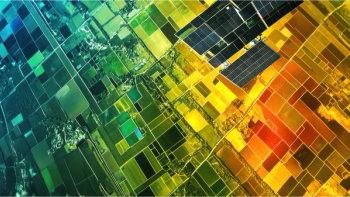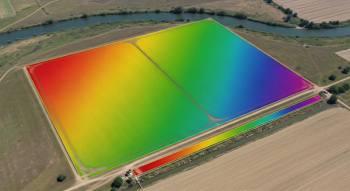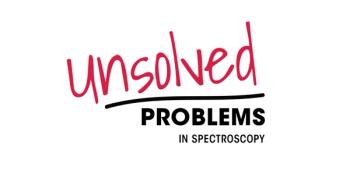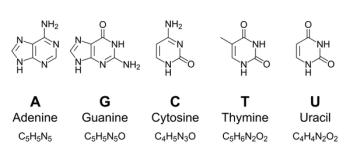
A recent study highlighted a novel method for recycling aging wind turbine blades, transforming waste into valuable materials while minimizing environmental impact.

A recent study highlighted a novel method for recycling aging wind turbine blades, transforming waste into valuable materials while minimizing environmental impact.

Using optical and near-infrared spectroscopy, researchers have identified crystalline water ice as the likely driver of explosive outbursts on comet 12P/Pons-Brooks. Their findings link this dramatic cometary activity to a process once observed in comets 17P/Holmes and 332P/Ikeya–Murakami.

Explore how spectroscopy enhances sustainability in energy, from solar panel durability to real-time gas monitoring and lithium-ion battery safety.

In this interview segment with Rohith Reddy, he discusses how mid-infrared spectroscopic imaging (MIRSI) can be used to help detect numerous disease types.

A recent study presented a novel deep learning model that could improve the prediction of fuel properties in the petroleum industry.

A new international review highlights how hyperspectral imaging (HSI) is revolutionizing diverse fields—from counterfeit detection and agriculture to cancer diagnostics—by capturing unprecedented spectral detail invisible to traditional cameras. The study identifies major advances, challenges, and the growing role of artificial intelligence in real-time HSI applications.

Spectroscopy is playing a sizable role in expanding the capabilities of remotely operated and manned submersibles. A recently published nonfiction book highlights the advancements made in deep-sea exploration technology, and we discuss spectroscopy's role in all of this.

Researchers have developed a new method combining unmanned aerial vehicle (UAV) hyperspectral imaging with satellite data to monitor chlorophyll-a (Chla) and total nitrogen (TN) concentrations in coastal wetland waters. Their approach enhances the precision and scalability of water quality assessments, providing a model for managing eutrophication in fragile ecosystems.

This article provides a clear refresher on key spectroscopy techniques—IR/NIR, Raman, UV–Vis, XPS/XAS, NMR, ICP-MS, and LIBS—and their applications in the energy industry, from batteries and solar panels to fuel production and emissions monitoring.

Researchers uncover the hidden dangers of ship paint-derived microplastics, revealing their complex composition and ecological risks in marine environments.

Recently, a team of researchers investigated a new approach for manipulating electron motion at the femtosecond timescale.

Leading experts from Covalent Metrology, PerkinElmer, IAS, and Linde identify the top efficiency and purity challenges facing semiconductor manufacturers and reveal how advances in spectroscopy and automation are reshaping fabrication, contamination control, and process precision across the industry.

Researchers at the European Space Research and Technology Centre (ESTEC) have developed a new framework for onboard hyperspectral image processing that uses deep learning to analyze massive volumes of spectral data in real time. Their review highlights lightweight neural networks, generative models, and hardware accelerators as key technologies shaping the next generation of spaceborne Earth observation.

In this edition of “Inside the Laboratory,” we profile the Schultz Laboratory at The Ohio State University in Columbus, Ohio, speaking with Zac Schultz, Spencer Witte, Nishadi Nadeeshani, and Renee Romano about their work.

Top articles published this week include an interview with our Emerging Leader in Molecular Spectroscopy award winner Lingyan Shi, a mini-tutorial highlighting practical workflows and innovative applications, and an inside look at single-particle ICP-TOF-MS.

Researchers at Tianjin University of Technology develop a rapid, in situ technique for identifying adulteration in starch sausages using laser-induced breakdown spectroscopy.

Discover the latest advancements in medical devices and artificial intelligence, focusing on the transformative impact of IoMT devices in healthcare.

A recent study highlights novel analytical techniques for phosphorus detection, enhancing pollution control and sustainability in environmental monitoring.


A sweeping review, “Surface-Enhanced Raman Spectroscopy: A Half-Century Historical Perspective” traces the evolution of SERS from its foundational experiments in the 1970s through the nanoscience era and modern high-spatial-resolution techniques.

In this final interview segment with Lingyan Shi, she discusses the challenges of developing multimodal metabolic nanoscopy systems, and where these systems could be applied in the future.

A review article from researchers at Liaocheng University explores the challenges of applying vibrational spectroscopy techniques to food authentication.

An analytical method was established for determining the contents of 17 impurity elements in aluminum nitride by inductively coupled plasma optical emission spectrometry. The experiment investigated a dissolution method for samples, working conditions of the instrument, analytical spectral lines, matrix interference and correction methods, and detection limits.

Here are ten main unsolved problems in vibrational and atomic spectroscopy, each accompanied by a tutorial-style synopsis suitable for advanced practitioners or graduate-level students. Each of these tutorials, spanning advanced spectroscopy modeling, chemometrics, machine learning (ML) interpretability, and standardization, consists of a descriptive article. Each piece is well-referenced (with detailed matrix equations, radiative transfer models, chemometric derivations, and so forth), and includes the following. • Special focus on each topic—including mathematical derivations in matrix notation. • Conservative, verifiable content anchored to established reference sources. • Appropriate tutorial article structure: Title, Summary, Abstract, Introduction, Theory with equations, Examples, Discussion & Future Research, and References.

In the second part of a three-part interview, Lingyan Shi recaps the award technical session that she chaired at the SciX Conference, highlighting the speakers she invited and what they discussed.

A new study reveals that resveratrol binds to peanut protein arachin through hydrophobic and hydrogen-bond interactions, enhancing protein stability and offering valuable insights for developing functional peanut-based food products.

Spectroscopy spoke to Benjamin Manard, Senior R&D Staff Scientist and the Group Leader of the Chemical & Isotopic Mass Spectrometry Group at Oak Ridge National Laboratory (ORNL) as well as to Sarah Szakas and Jordan Stanberry, postdoctoral researchers at ORNL, regarding their work using examined single-particle inductively coupled plasma time-of-flight mass spectrometry (SP-ICP-TOF-MS) as a novel technique for uranium particle isotope ratio measurements.

This curated collection of recent Spectroscopy magazine mini-tutorials highlights the latest analytical and data-driven innovations in vibrational spectroscopy. Covering NIR, Raman, O-PTIR, and related optical methods, the series emphasizes practical workflows, emerging machine learning integrations, and advanced chemometric techniques for real-world laboratory applications—from food and environmental monitoring to biomedical analysis and nanoscale imaging.

In this interview segment, Shi recaps her talk that she delivered at the SciX Conference and the four major technologies that she and her team developed over the past few years at the University of California, San Diego.

In a recent study, a team of researchers from Peking University and the National Key Laboratory of Advanced Micro and Nano Manufacture Technology have proposed a new method for identifying DNA nucleobases using a fusion of terahertz time-domain spectroscopy (THz-TDS) and advanced deep learning techniques.